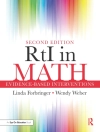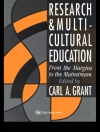Bringing together conceptual, practice, and advocacy knowledge, Ending Human Trafficking and Modern-Day Slavery: Freedom′s Journey explores the complexities of human trafficking and modern-day slavery through a global perspective. This comprehensive, multidisciplinary text includes a discussion of the root causes and structural issues that continue to plague society, as well as real-life case studies and vignettes, the words of human trafficking survivors, and insights from first responders and anti-trafficking advocates. Each chapter includes a ‘call to action’ to inspire readers to implement a range of strategies designed to disrupt, eradicate, or mitigate human trafficking and modern-day slavery.
Tabla de materias
About the Author
About the Contributors
Acknowledgments
Preface
PART 1 HISTORICAL CONTEXTS, DEFINITIONS, AND ROOT CAUSES OF HUMAN TRAFFICKING AND MODERN-DAY SLAVERY
1 Introduction and History of Human Trafficking and Modern-Day Slavery
Chapter Objectives
History of Slavery
Defining Trafficking
Sex Trafficking
Understanding Sex Work
Labor Trafficking
Conceptual Approaches to Human Trafficking
Scope of the Issue
Trafficking in Persons (TIP) Report
Alternatives to the TIP Report
Call to Action: A Multitude of Lenses
Discussion Questions
Challenge
2 The Law of Supply and Demand: The Business of Trafficking
Chapter Objectives
Demand Dynamics
Supply Side
Beyond Supply and Demand
Call to Action: Changing the Business Model
Discussion Questions
Challenge
3 Social Determinants of Human Trafficking and Modern-Day Slavery
Chapter Objectives
Social Determinants
Poverty
Militarization
World War II Sex Slaves (“Comfort Women”)
Case Vignette: Chien
Corruption
Female Gender
Race and Ethnicity
Culture
Caste and Class
Call to Action: Ending Trafficking by Targeting Social Determinants
Discussion Questions
Challenge
PART 2 CLINICAL INTERVENTIONS
4 Trauma-Informed Care
Chapter Objectives
Introduction
Defining Trauma
Complex Trauma
Neurobiology and Trauma
Impact of Trauma-Informed Care
Trauma-Informed Care and Trafficking
Principles to Guide Practice
Implementing Trauma-Informed Care
Trauma-Informed Practice Example: Seeking Safety
Meditation and Mindfulness
Complex Case
Call to Action: Strengths-Based and Trauma-Informed
Discussion Questions
Challenge
5 Case Management
Chapter Objectives
Introduction
Defining Case Management
Implementing Case Management
Resources for Case Managers
Effective Approaches
Challenges
Complex Case
Call to Action: Coordination, Communication, Case Management
Discussion Questions
Challenge
6 Trauma-Focused Cognitive Behavioral Therapy
Chapter Objectives
Defining Trauma-Focused Cognitive Behavioral Therapy
Implementing Trauma-Focused Cognitive Behavioral Therapy
PTSD: Common Diagnosis with Victims of Trafficking
Current Issues with Cognitive Behavioral Therapy
Complex Case
Call to Action: Reframe and Rethink
Discussion Questions
Challenge
7 Survivor Advocate Model
Chapter Objectives
Introduction
Pimp Appropriation
Survivor Advocate Model
Examples of Survivor Advocate Models
12 Beliefs
Challenges
Complex Case
Call to Action: No Justice, No Peace
Discussion Questions
Challenge
8 Interventions for Commercially Sexually Exploited Children (CSEC)
Chapter Objectives
Introduction
Overview of CSEC
The Language of CSEC
Screening for CSEC
Widely Used CSEC Interventions
Global Child Trafficking
Case Vignette: Amber
Call to Action: One Child Is One Child Too Many
Discussion Questions
Challenge
PART 3 POLICY INTERVENTIONS
9 Landmark Policies in Trafficking and Modern-Day Slavery
Chapter Objectives
Introduction
The United Nations Convention Against Transnational Organized Crime: The Palermo Protocols
United States: Trafficking Victims Protection Act of 2000
Highlight: Kids in Need of Defense (KIND)
Additional Legislation
Safe Harbor Laws
Anti-trafficking Laws: A Global View
Organizational Highlight: Coalition to Abolish Slavery and Trafficking (CAST)
Case Vignette: Cristela
Call to Action: Create and Enforce Anti-trafficking Policy Worldwide
Discussion Questions
Challenge
10 Supply Chain Transparency
Chapter Objectives
Introduction: Labor Trafficking Overview
The Ghost Fleet
Understanding the Supply Chain
Laws Around Supply Chain Transparency
Case Study: Brazil, a National Pact for the Eradication of Slave Labor
The Road to Transparency
Highlight: H2B Visas and Migration
California Transparency in Supply Chains Act (CA–TISC)
Highlight: Alliance to Stop Slavery and End Trafficking (ASSET)
Modern Slavery Act–UK
Federal Acquisition Regulation (FAR) (Executive Order 13, 627) and the Trade Facilitation Enforcement Act of 2015 (H.R. 644)
Challenges
Best Practices
Case Vignette: Edward
Call to Action: Transparency to Freedom
Discussion Questions
Challenge
PART 4 ADVOCACY, ACTIVISM, AND INNOVATIONS
11 Grassroots’ Advocacy and Activism
Chapter Objectives
Introduction
(Human) Rights-Based Approach
Advocacy and Activism
Highlight: UN Women
Feminist Movement Building
Highlight: Coalition Against Trafficking Women
Grassroots Initiatives
Forging Institutional Partnerships
Developing Public and Institutional Support Through Research and Advocacy
Overall Insights: From the Local to the Global Perspective
Challenges
Call to Action: Advocacy and Activism to End Trafficking and Modern-Day Slavery
Discussion Questions
Challenge
12 Faith-Based Organizations
Chapter Objectives
Introduction
Faith-Based Services
Faith-Based Abolitionist Movements
Highlight: Hookers for Jesus (Domestic Organizational Highlight)
Faith-Based Services, Programs, and Projects
Highlight: Wellspring International
Challenges
Case Vignette: Fellowship Monrovia
Call to Action: Be the Light
Discussion Questions
Challenge
13 Prevention
Chapter Objectives
Introduction
Ecosystems Lens
Addressing Root Causes
Examples of Best Practices
Adequate Training
Corporate Social Responsibility and Supply Chain Management
Challenges
Call to Action: Address “Complete Range of Vulnerabilities” for Effective Prevention
Discussion Questions
Challenge
14 Social Innovations in Human Trafficking: Solutions to a Wicked Problem
Chapter Objectives
Introduction
Wicked Problems
Growing Innovation in the Anti-trafficking Movement
Best Practices in Social Innovation
Highlight: Labor Voices
Highlight: Traffickcam
Challenges
Case Vignette: The Mariposa Center
Call to Action: Impact and Disruption as The Road to Ending Trafficking
Guiding Questions for Social Labs
Challenge
15 Ending Trafficking and Modern-Day Slavery
Chapter Objectives
What We Have Learned So Far
Evolving Trends
Changing Role of Survivor Advocates and/or Activists
Case Vignette: Women’s Rights Defenders
Call to Action: End Trafficking and Modern-Day Slavery Now!
Survivor Statements: In Our Own Words . . .
Discussion Questions
Challenge
Glossary
References
Index
Sobre el autor
Annalisa Enrile, MSW, Ph.D. , is one of the few Filipina Ph.D.s in social work, having chosen the field as a way to bring to light important social issues in the Filipino-American community, the fastest-growing Asian immigrant population in the United States. She frequently speaks out against sex trafficking, anti-militarization and exploitative migrant labor. A voice for equity, human rights, and global justice, Annalisa has been recognized as one of the 100 Most Influential Filipinas in the World (FWN Global 100) for her efforts to stop violence against women. She has worked with students, communities and academic partners to create social change and impact through innovation and collaboration. Annalisa is a Clinical Associate Professor at the USC Suzanne Dworak-Peck School of Social Work. She teaches human behavior, management, social innovation, social change, global violence against women, and international social work. Annalisa develops curriculum and creates unique learning experiences and opportunities for students at the undergraduate and MSW level. She leads one of the school’s original global immersion programs to the Philippines and Europe, in the areas of diversity, human rights, gender violence, trafficking, and change. Annalisa also coordinates the school’s Doctorate in Social Work (DSW) Residency program. Annalisa is active in community organizations, including serving on several anti-trafficking task forces, and is on the board of the Mariposa Center for Change, an organization that serves women and children of color. She consults with organizations such as the Coalition to Abolish Slavery and Trafficking (CAST), Covenant House, Inc., YWCA Greater Los Angeles, and Search to Involve Pilipino Americans (SIPA). She practices international social work, having been an activist and advocate for vulnerable populations around the world since 1993. Annalisa would like to personally thank her family for all of their support and her kasamas who taught her what it means to fight for women’s genuine liberation, modeled how to stand in your truth, and remind her every day just what is at stake if we do not struggle.












